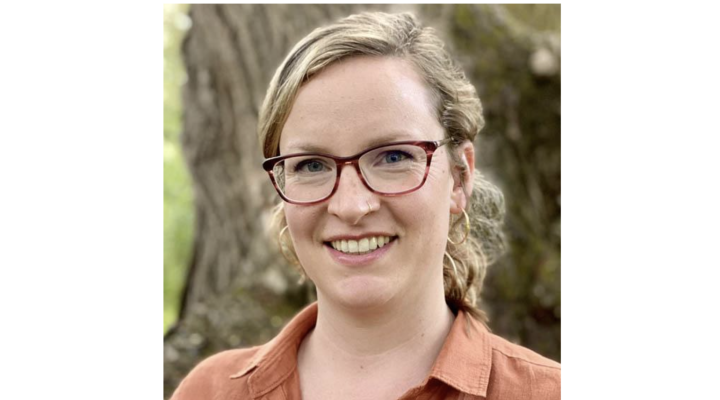Nicole Benedek can’t remember a time when she wasn’t fascinated by science. “It’s such a cliche,” she says, “but ever since I was a little girl, it’s just been something that’s always been with me.” That early fascination has grown into a career as a computational materials scientist, which has led her to study the bonds that hold molecular crystals together, to how heat flows through materials, to research on the next generation of fuel cells. “This field is fun for many technical reasons,” says Benedek, “and it’s exciting to do work that ties in with clean energy.”
As a computational materials scientist, Benedek’s research is primarily fundamental—forging a better understanding of how the properties of materials arise from the way their atoms are arranged at very small scales. “If you can determine why a certain material has the properties it has, you can exploit that knowledge to better design your materials, whatever your application is,” she says.
Benedek works primarily with oxides, specifically, with oxide minerals known as perovskites, which have promising applications in the clean energy field. For example, they have potential to be used as a cathode material for solid oxide fuel cells. Fuel cells are like a cross between an engine and a battery: they run as long as fuel is supplied, like an engine, but produce energy from electrochemical reactions, like a battery. In the case of solid oxide fuel cells, the electrochemical reactions involve the movement of oxygen atoms through the device. Fuel cells can produce energy cleanly and efficiently but “The challenge is,” Benedek explains, “[solid oxide] fuel cells operate at very high temperatures, like 1000 degrees Celsius, so you have to use very expensive materials that can withstand those temperatures.”
These super-high temperatures enable oxygen ions to travel swiftly through the cathode material. If the material is cooled down, the atoms get sluggish, and that makes for a less efficient fuel cell. Thus, “the holy grail would be a [solid oxide] fuel cell material that could work well at room temperature,” says Benedek. Perovskites may be the key to that Holy Grail, although there’s still many details that have to be understood before that happens.
Part of those unknown elements are the atomic-scale factors that help oxygen ions move quickly through a material, or that slow them down. Through Benedek’s theoretical work, she is examining the migration mechanisms of the ions, and linking that to the crystal structure and composition of the oxide material they travel through. “That kind of work is very difficult to do in experiments, so I can provide that very fundamental knowledge that allows people to say which materials are useful to consider, and which are not so useful.” Armed with that information, synthetic chemists and engineers can then begin to figure out how to improve materials for practical applications like photovoltaics or fuel cells.
Benedek is no stranger to Cornell, having previously, worked as a post-doctoral fellow in Applied Physics. After living in the sunbaked climate at the University of Texas at Austin, she says she is ready and willing to return to the (sometimes) frozen North and re-establish herself as a professor. “Cornell is unique in the way that people work together, and how people from different departments collaborate,” she says. “That kind of culture is something I’ve never experienced anywhere else.”




